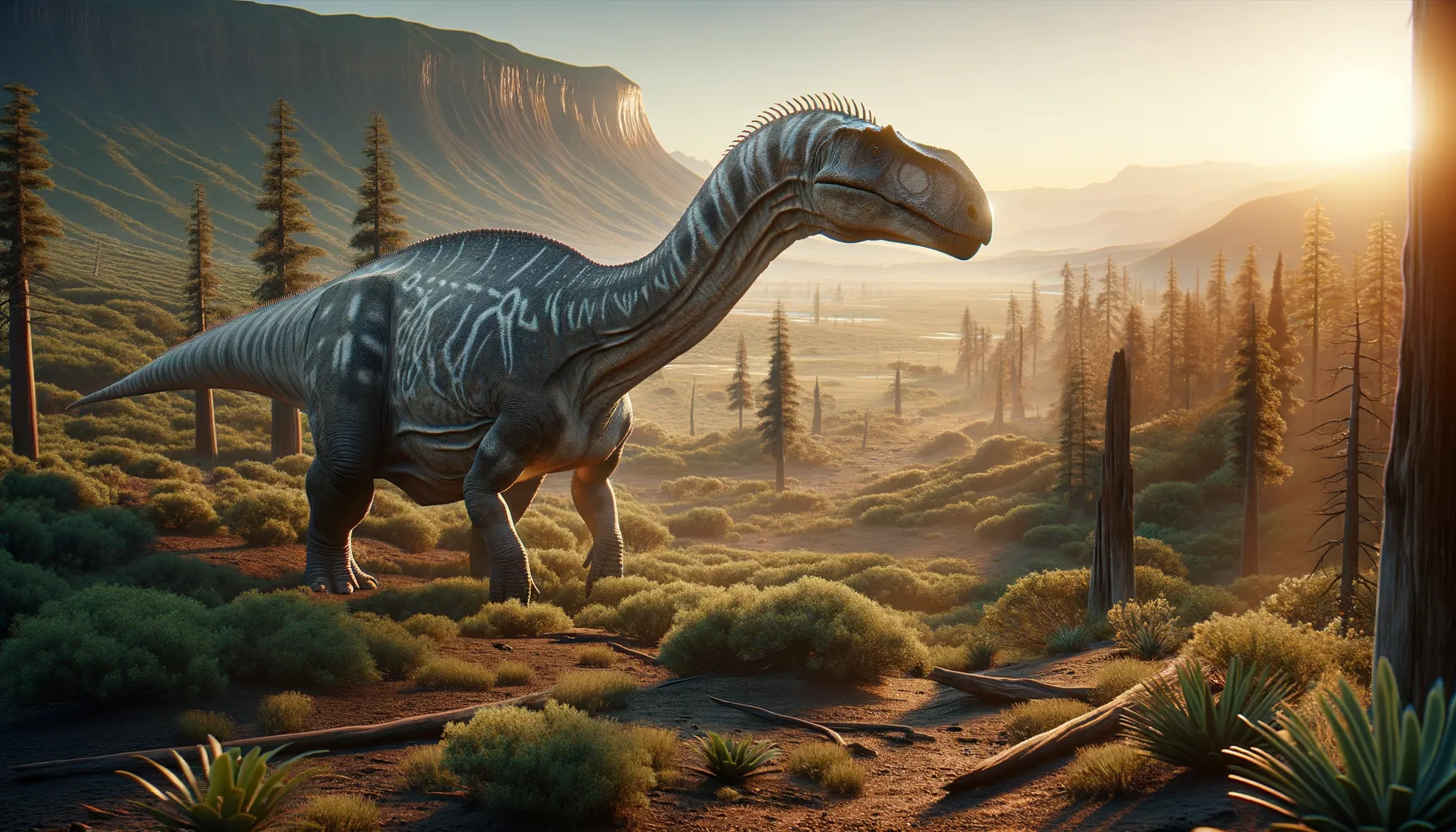
Tataouinea
A titan of the Cretaceous desert plains!
Period
Cretaceous
Length
Extended over 13 meters in length.
Height
Could reach up to 7 meters tall.
Weight
Estimated to weigh over 20 tons.
Tataouinea is a fascinating sauropod dinosaur that roamed the Earth during the Late Cretaceous period. Originating from what is now northern Africa, this massive dinosaur was part of the diverse group of long-necked herbivores. Its discovery has contributed valuable insights into the evolution and diversification of sauropods in ancient ecosystems. Its robust build and long tail made it a remarkable creature in the prehistoric landscape.
Diet
Tataouinea was herbivorous, feeding primarily on conifers and cycads, which were prevalent in its environment. Its long neck enabled it to reach high vegetation, allowing it to graze efficiently.
Hunting
As a herbivore, Tataouinea did not hunt for food. Instead, it browsed for plant material, relying on its size and strength to deter predators and ensure a steady supply of foliage.
Environmental challenges
Tataouinea faced several environmental challenges, including arid conditions prevalent in its habitat. It likely had to migrate seasonally in search of food and water sources. Predation by large carnivorous dinosaurs would have also been a threat, potentially affecting group dynamics and behavior. Additionally, competition with other herbivores for food resources could have influenced its feeding patterns.
Speed
Likely slow-moving due to its massive size.
Lifespan
Possibly lived several decades like other sauropods.
First discovery
Discovered in 2011 in Tunisia.
Fun Facts
- Tataouinea is named after Tataouine, a town in Tunisia where its fossils were discovered.
- This dinosaur lived around 120 million years ago during the Early Cretaceous period.
- Tataouinea belonged to the group of dinosaurs known as sauropods, which are famous for their long necks and tails.
- It was a herbivore, meaning it primarily ate plants.
- Tataouinea is considered to have had a lightweight build compared to other sauropods, which might have helped it move more easily.
- The discovery of Tataouinea's fossils has helped paleontologists understand more about the diversity of dinosaurs in North Africa.
- Despite its name, Tataouinea likely didn't inspire any of the alien architecture in the Star Wars films, even though scenes were shot in Tataouine.
Growth and Development
Tataouinea likely experienced rapid growth rates during its juvenile years, a common trait among sauropods to deter predators. Growth rings in its fossilized bones suggest it reached maturity relatively quickly. As an adult, its enormous size would have provided safety from many predators. The development of its long neck and tail contributed to its survival, allowing it to access various food sources.
Habitat
This dinosaur lived in what is now North Africa, a region that was more vegetated during the Late Cretaceous. It inhabited floodplains and possibly semi-arid environments, characterized by seasonal climate changes. The availability of large, open spaces would have been beneficial for its long-foraging journeys and social behavior. Water sources such as rivers and lakes would have been crucial for its survival in periods of drought.
Interaction with other species
Tataouinea likely coexisted with various species, including other herbivores, which could have led to competition over vegetation. Its massive size provided it with a deterrent against predators, making interactions with carnivorous dinosaurs rare and typically focused on juvenile or sick individuals. Symbiotic relationships with smaller animals, like birds cleaning its skin, might have been possible.
Natural lifespan
Tataouinea could have lived up to 80 years, akin to other large sauropods.
Reproduction
Tataouinea reproduced by laying eggs, likely in communal nesting sites for increased protection. These eggs were probably covered with a protective layer to ensure the safety of the developing embryos. Extensive adult care post-hatching was unlikely, consistent with other large dinosaurs, relying instead on rapid juvenile growth to deter predators. Nesting behavior may have included selecting safe, hidden spots to avoid detection by predators.
Social behaviour
This dinosaur might have exhibited social behavior, living in groups for protection and support during migrations. Herds would have been beneficial for rearing juveniles and deterring predators through sheer numbers. Communication within groups could have included low-frequency sounds or body gestures. Group living allowed efficient feeding on vast stretches of vegetation without overgrazing a single area.
Fossil locations
Fossils of Tataouinea were found in the southern part of Tunisia. The discovery site has provided valuable insights into the paleoenvironment of the region during the Cretaceous period. Evidence from these locations has helped reconstruct the ecosystems that supported this and other contemporary species.
